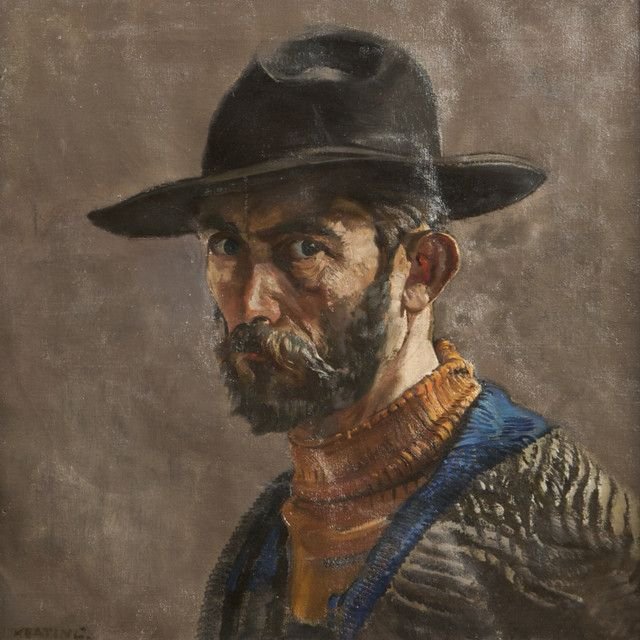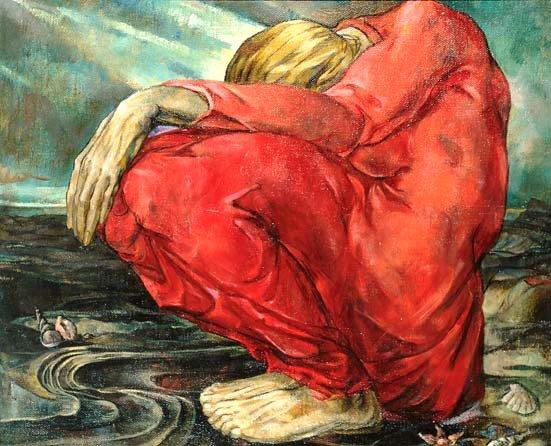John Lavery (1856-1941) Her First Communion (1902). Viewed this recently acquired portrait at the National Gallery today. Of his daughter, like much of the painter’s work a sense of melancholy penetrates the canvas. This particular piece was finished by James McNeill Whistler
John Lavery (1856-1941) Forest People (n.d.). Lavery led a big life, evident in the diversity of his subject matter. An official British war artist during WWI, he later gave up his London home to the Irish delegation of the Anglo-Irish Treaty. A free man of both Dublin & Belfast.
James Humbert Craig (1877-1944) The Top of Glendun, Co. Antrim (n.d.). In his lifetime Craig was considered on a par with Paul Henry. Born in Belfast he abandoned a business career to focus on his real passion. One of the most sought after and popular painters in Irish art.
James Arthur O’Connor (1792-1841) Figure Fishing by a Wooded Stream (n.d.). The dense wooded environment surrounding the figure brings a sense of ambience to a painting that is instantly recognizable as an O’Connor. This Irish painter was born in Dublin, and died in London.
Colin Middleton (1910-1983) The Seventh Wave (1946). The turbulent sea and sky mark out this expressionist piece at a time when the world was still under the dark clouds of the wars legacies. The Belfast native was one of the truly great Irish modernists.
Frank McKelvey (1895-1974) Glimpse of Lough Inagh (n.d). One of Ireland’s most popular and collected landscape artists, McKelvey is from the great tradition of Belfast painters. A prize winner and art academic his work is a pictorial celebration of rural Ireland
I’m never here to advertise but I have to let you know that ‘Loving Vincent’ is now available to watch on Netflix: a must watch for any of us art lovers! I spotted his portrait recently at the Musée d’Orsay https://t.co/dllDUpM2JU
Mary Swanzy(1882-1979) Ebb Tide (1941). Has been called the most distinguished Irish artist of the 20th century, with her early work moving between the abstract genres of cubism and fauvism. Swanzy’s later ‘war’ paintings captured the darkness that fell over Europe, and the world
Vincent, I’d love you if you weren’t so crazy! Today I’m visiting Vincent at the Musée d’Orsay in Paris
William Conor (1881-1968) Men from Harland and Wolfe (n.d.). Dubbed 'The People's Painter' for his depictions of the everyday Ulster hoi polloi, Conor made the distinctive crayon technique his own. Spent studio residencies in Paris and London. Died of hypothermia















